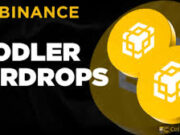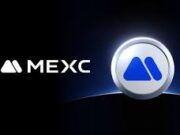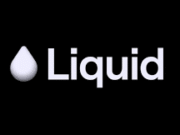In the aftermath of the dramatic October 10 market crash, Binance users experienced a serious anomaly: three tokens — USDE, BNSOL, and WBETH — suffered price depegging on Binance’s platform. These disruptions triggered forced liquidations and widespread concern among traders. Fortunately, Binance has now announced that the depeg issues have been resolved, and the exchange has rolled out enhanced risk control measures to prevent similar incidents in the future. In this blog, we break down what happened, how Binance responded, and what protections have been put in place going forward.
What Happened: The Depeg Event Explained
Sudden Price Slide:
During the extreme volatility on October 10, the pegged values of USDE (a stablecoin), BNSOL (a Solana-related synthetic), and WBETH (a wrapped ETH token) deviated sharply from their expected values. For instance, USDE dropped to as low as $0.65 on Binance, while BNSOL and WBETH saw similar mispricing relative to their normal indexes. (TradingView)
These deviations didn’t just confuse traders — they triggered mass liquidations in futures, margin, and loan positions that used those tokens as collateral. Binance later acknowledged that the depeg “caused forced liquidations for some traders.” (FinanceFeeds)
Divergence from Other Exchanges:
Interestingly, the depeg appeared largely isolated to Binance, meaning that prices for the same tokens on other platforms did not experience the same drastic divergence. That suggests that the root issues were internal — tied to how Binance sourced and managed pricing indices and internal risk parameters. (RootData)
Binance’s Official Response
Acknowledgment & Compensation
Binance published a formal announcement confirming the depeg issue and laying out its compensation plan. (Binance)
- Futures, margin, and loan users who held USDE, BNSOL, or WBETH as collateral and were impacted between 2025-10-10 21:36 and 22:16 (UTC) will be compensated automatically. (Binance)
- The compensation will cover not just the difference in price, but also any liquidation fees incurred during that window. (Binance)
- Binance states affected users should see the credit in their accounts within 72 hours. (Binance)
Binance also apologized to users, stating that “recent market volatility and platform-related issues have affected some users, and we sincerely apologize for the inconvenience caused.” (Binance)
Risk Control and Index Adjustments
Beyond compensation, Binance committed to enhanced risk controls and specific technical changes, such as: (Binance)
- Including the redemption price in the index weights of USDE, BNSOL, and WBETH to provide more stable anchor points.
- Imposing a minimum price threshold in the USDE indexing rule, to reduce downside deviation.
- Increasing the frequency of reviewing risk control parameters, so that they adjust dynamically to extreme market conditions. (Binance)
Additionally, Binance announced that margin index sources for BNSOL and WBETH will be revised: moving from purely Binance spot pricing to a conversion ratio approach tied to staking or asset-conversion ratios to reduce reliance on volatile spot price feeds. (Binance)
Technical Fixes & Safeguards
Revised Price Index Components
One of the key technical fixes is updating how the price indices for BNSOL and WBETH are composed. Prior to adjustment, these indices heavily relied on Binance spot prices. After the fix:
- BNSOL: zero weight on Binance’s direct BNSOL/USDT price; instead it will derive from cross-pair (BNSOL/SOL × SOL/USDT) using official SOL redemption ratios. (Binance)
- WBETH: similarly, the index will rely on WBETH/ETH × ETH/USDT conversion paths rather than a direct WBETH/USDT spot feed. (Binance)
These adjustments reduce the risk that mispricing on spot markets cascades directly into margin or futures systems.
Minimum Price Threshold for USDE
For USDE (a stablecoin), Binance plans to embed a minimum acceptable price threshold — essentially, a floor below which the index cannot fall — as an early defense against abnormal deviation in extremely volatile conditions. (Binance)
More Frequent Risk Reviews
Binance also pledged to review risk parameters more frequently, rather than leaving them static over longer timeframes. This means stress tests, volatility filters, and guardrails will be updated in more real time, enabling faster responses under sudden market stress. (Binance)
Why This Matters for Traders
Protecting Collateral & Positions
When a token used as collateral loses its peg unexpectedly, the margin system can interpret it as a loss and force liquidation, even if the fundamental asset didn’t move similarly elsewhere. That creates unfair losses for traders. The fixes Binance is implementing aim to protect against that scenario.
Restoring Confidence
In high-volatility markets, trust in exchange infrastructure is crucial. Showing that they can identify and repair deep systemic flaws in risk control helps restore confidence. Other exchanges and regulators are likely paying close attention.
Implications for Risk Awareness
This incident is a stark reminder: trading crypto always carries risk — not just from asset volatility but also from technical, indexing, or internal platform issues. Traders should monitor collateral quality, platform risk disclosures, and backup strategies.
What Users Should Do Next
- Check your account to see if you were part of the impacted period (2025-10-10 21:36 to 22:16 UTC).
- Verify compensation credit in your futures, margin, or loan balances within 72 hours — Binance pledged automatic distribution. (Binance)
- Monitor the updated index methodology, especially if you trade or stake BNSOL or WBETH.
- Adjust leverage and collateral strategies to rely less on volatile synthetic or wrapped tokens.
- Stay informed about Binance’s future announcements and safeguards to ensure your positions remain protected.
Broader Industry Implications
This event underscores a few larger trends in the crypto exchange world:
- Index vulnerability matters: Exchanges cannot solely rely on spot feeds; hybrid or multi-source indexing may become standard.
- Regulatory scrutiny will likely increase: When platform errors cause trader harm, external bodies often step in. Crypto.com’s CEO already called for probing of major exchanges. (FinanceFeeds)
- Risk controls are a differentiator: Exchanges that can survive extreme volatility without breakdowns may earn long-term trust.
- Better transparency is demanded: Users will expect more clarity on collateral, index rules, and fail safes.
Conclusion
Binance’s resolution of the USDE, BNSOL, and WBETH depeg event marks a critical step in damage control. By compensating impacted users, publicly acknowledging the faults, and implementing enhanced risk controls and index reforms, Binance is signaling that it takes such systemic risks seriously.
However, this incident also serves as a warning to all crypto traders: volatility isn’t just about asset prices — it’s also about how exchanges manage collateral, indexing, and internal guardrails. Stay informed, diversify your risk exposure, and monitor exchange announcements closely.
If you want a deeper dive into how wrapped tokens differ from native tokens, or how margin systems calculate liquidation thresholds, feel free to ask!
Source Links & References
- Binance official announcement: “Resolution of USDE, BNSOL, and WBETH Price Depeg” (Binance)
- Binance support: updating margin index components for BNSOL & WBETH (Binance)
- External news on depeg and forced liquidations (FinanceFeeds)
- Discussion of divergence and institutional liquidation theories (RootData)



























